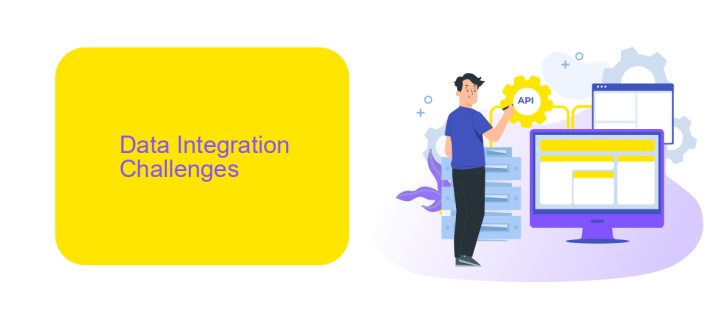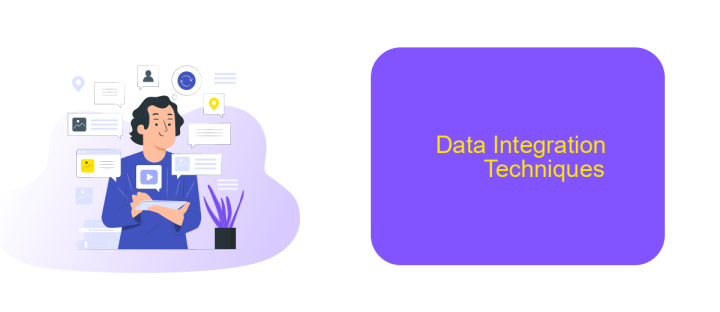Data Integration Concepts
Data integration is a critical process in modern data management, enabling the seamless combination of data from diverse sources into a unified view. This article explores key concepts, methodologies, and tools that facilitate effective data integration, ensuring accurate, consistent, and timely information for decision-making. Understanding these fundamentals is essential for businesses to leverage their data assets efficiently and drive strategic insights.
Introduction to Data Integration
Data integration is a crucial process in modern data management, enabling organizations to combine data from different sources into a unified view. This practice ensures that data is consistent, accurate, and accessible, leading to better decision-making and operational efficiency.
- Combining data from multiple sources
- Ensuring data consistency and accuracy
- Facilitating better decision-making
- Enhancing operational efficiency
Tools like ApiX-Drive simplify the process of setting up data integrations. ApiX-Drive allows users to easily connect various applications and automate data transfer between them, reducing the need for manual intervention and minimizing errors. By leveraging such services, organizations can streamline their data workflows and focus on deriving actionable insights from their integrated data.
Data Integration Challenges

Data integration poses several challenges, primarily due to the diversity and complexity of data sources. Different systems often use varying formats, structures, and protocols, making it difficult to harmonize data seamlessly. Ensuring data quality and consistency across these disparate sources can be a daunting task, as errors or inconsistencies in one system can propagate through the integrated dataset. Additionally, data security and privacy concerns arise when integrating sensitive information, necessitating robust measures to protect against unauthorized access and breaches.
Another significant challenge is the scalability of integration solutions. As organizations grow and their data volumes increase, traditional integration methods may struggle to keep up. This is where modern integration tools like ApiX-Drive come into play, offering automated and scalable solutions to streamline data integration processes. ApiX-Drive enables seamless connections between various applications and services, reducing manual intervention and minimizing errors. By leveraging such tools, businesses can ensure more efficient and reliable data integration, allowing them to focus on deriving actionable insights and driving growth.
Types of Data Integration

Data integration is a critical process in modern data management, enabling organizations to combine data from various sources into a unified view. There are several types of data integration techniques, each with its unique advantages and use cases.
- Manual Data Integration: This method involves manually collecting and consolidating data from different sources. It is time-consuming and prone to errors but can be useful for small-scale projects.
- Mediated Data Integration: This approach uses a mediator to facilitate the integration process. The mediator transforms data from different sources into a common format, simplifying the integration.
- Application-Based Integration: This method utilizes applications to automate the data integration process. Tools like ApiX-Drive can streamline this process by connecting various applications and transferring data seamlessly.
- Uniform Data Access: This technique provides a unified interface to access data from different sources without physically integrating the data. It ensures real-time access and consistency.
- Common Data Storage: Also known as data warehousing, this method involves consolidating data from different sources into a single repository for easy access and analysis.
Each type of data integration has its specific use cases and benefits. Choosing the right method depends on the organization's needs, data sources, and the complexity of the data environment. Tools like ApiX-Drive can significantly enhance the efficiency and accuracy of the integration process, making it easier to manage and utilize data effectively.
Data Integration Techniques

Data integration techniques are crucial for combining data from different sources into a unified view. These techniques ensure that the data is accurate, consistent, and accessible, enabling organizations to make informed decisions. There are several methods to achieve effective data integration, each with its own advantages and use cases.
One of the most common techniques is ETL (Extract, Transform, Load), which involves extracting data from various sources, transforming it into a suitable format, and loading it into a target database. Another technique is data virtualization, which allows users to access and manipulate data without needing to know its physical location. API-based integration is also gaining popularity, enabling real-time data exchange between applications.
- ETL (Extract, Transform, Load)
- Data Virtualization
- API-based Integration
- Data Warehousing
- Data Replication
Tools like ApiX-Drive facilitate API-based integration by providing a user-friendly interface to connect multiple applications and automate data workflows. These tools help streamline data integration processes, reduce manual effort, and ensure data consistency across platforms. By leveraging these techniques, organizations can harness the full potential of their data assets.
Benefits and Applications of Data Integration
Data integration offers numerous benefits, including enhanced decision-making, improved data quality, and streamlined operations. By consolidating data from various sources, organizations can gain a comprehensive view of their operations, enabling more informed strategic decisions. Improved data quality is another significant benefit, as integration processes often include data cleansing and validation, ensuring that the information used is accurate and reliable. Additionally, streamlined operations result from the elimination of data silos, reducing redundancy and improving efficiency across departments.
Applications of data integration are vast and span multiple industries. In healthcare, integrated patient data can lead to better diagnosis and treatment plans. In retail, it enables personalized customer experiences by combining purchase history, preferences, and browsing behavior. Tools like ApiX-Drive facilitate these integrations by providing an easy-to-use platform for connecting various applications and services. This allows businesses to automate workflows, reduce manual data entry, and ensure that data is consistently up-to-date across all systems. Overall, data integration is a critical component for any organization looking to harness the full potential of its data.
FAQ
What is data integration?
Why is data integration important?
What are some common challenges in data integration?
How can automation help in data integration?
What are the key components of a data integration strategy?
Apix-Drive will help optimize business processes, save you from a lot of routine tasks and unnecessary costs for automation, attracting additional specialists. Try setting up a free test connection with ApiX-Drive and see for yourself. Now you have to think about where to invest the freed time and money!

